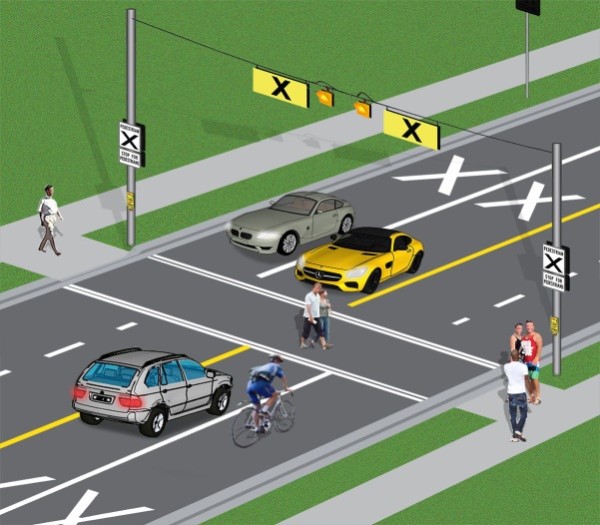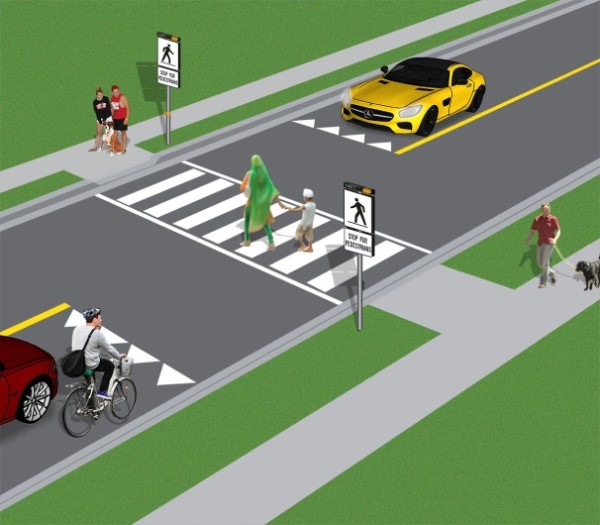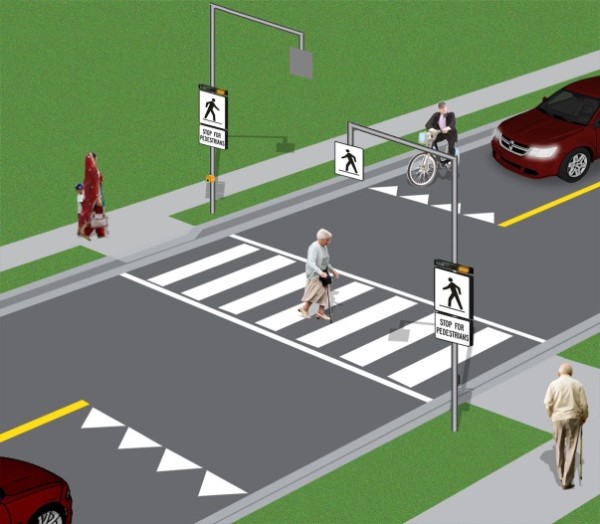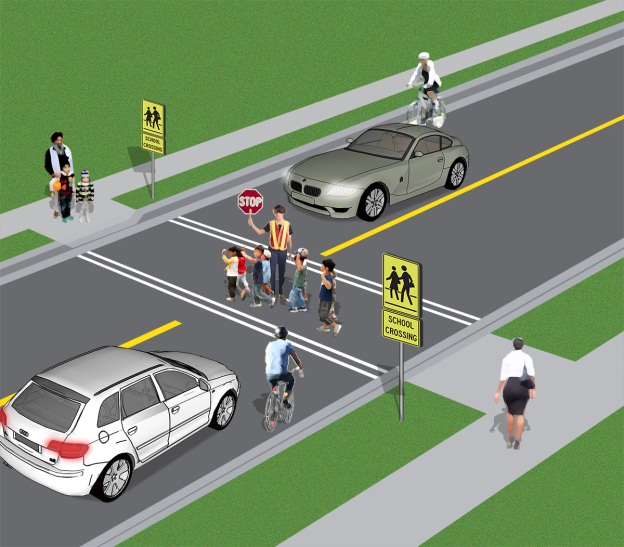Driving near pedestrian crossovers and school crossings
Learn the rules for pedestrian crossings and the penalties for endangering people on the road.
Rules for drivers
Drivers including cyclists must stop and yield the entire width of the roadway (wait for pedestrians to clear the road) at:
- pedestrian crossovers
- school crossings
- locations where there is a crossing guard
Only when pedestrians and school crossing guards have crossed and are safely on the sidewalk can drivers and cyclists proceed.
Pedestrian crossovers
A pedestrian crossover is a crossing that has:
- specific signs
- pavement markings
- lights
Some have:
- illuminated overhead lights
- warning signs
- pedestrian push buttons
Here are examples of pedestrian crossovers in Ontario:
| Type of crossover | Diagram |
|---|---|
| Pedestrian crossover with flashing lights |  |
| Pedestrian crossover with pavement markings and signs |  |
| Pedestrian crossover with pedestrian push buttons, pavement markings, signs and lights |  |
School crossings
A school crossing is any pedestrian crossing where a:
- school crossing guard is present
- school crossing stop sign is displayed

How crosswalks differ from crossovers
A crosswalk is different from a crossover. A crosswalk is usually found at an intersection with traffic signals, pedestrian signals or stop signs.
A crosswalk can be:
- the portion of a road that connects sidewalks on opposite sides of the road into a continuous path, or
- the portion of a road that is indicated for pedestrian crossing by signs, lines or other markings at any location, including an intersection
At crosswalks, drivers are only required to stop and yield the entire roadway when a school crossing guard is present.
Penalties
The penalties for drivers who endanger pedestrians are as follows:
| Offence | Fine | Demerits | Other penalties |
|---|---|---|---|
| Failing to yield at pedestrian crosswalks, school crossings and crossovers | Up to $1000 | 4 demerit points | None |
| Running a red light | Up to $1000 | 3 demerit points | None |
| Failure to stop for a school bus | First offence: Up to $2000 Each following offence: Up to $4000 | 6 demerit points | May result in imprisonment for up to 6 months |
| Failure to remain at scene of collision | Up to $2000 | 7 demerit points | May result in imprisonment for up to 6 months and/or a 2-year driver’s licence suspension |
Fines double in Community Safety Zones near schools and public areas, which are clearly marked with signs.
There are additional penalties for careless driving if pedestrians are put at risk.
Tips for drivers
As a driver, always be ready in case pedestrians make sudden or unexpected moves. Here are some tips:
- pay special attention to pedestrians especially when turning
- watch for children. Drive slowly and cautiously through school zones, residential areas or any other area where children could be walking or playing.
- watch for Community Safety Zone signs that indicate areas of special concern to the public
- be patient especially with seniors or pedestrians with disabilities who need more time to cross the road
- drive carefully when you are near streetcars or bus stops where passengers get on and off, and be sure to yield and stop when required